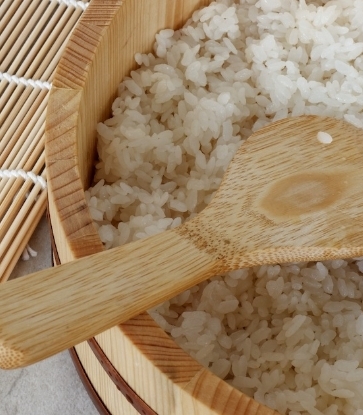One such is Alati, a casual spot on Amoy Street which insists on focusing on the bounty of the Mediterranean. But having the laser focus of serving up Greek fare without sacrificing on its long history and integrity has its challenges.

“Greek cuisine is very ingredient-centric. Without great produce, we would not be able to showcase true Greek dishes and flavours,” explains Leong. Comparing this principal with Singaporean chicken rice, he adds: “It is not quite as good as having it in Singapore because the ingredients themselves taste different from country to country. The simple scallion or chilli can taste vastly different due to the soil it is grown in.”
Here are 5 ingredients and food items from Greece.

The Greeks these days have been preferring Italian style coffee drinks and frappuccinos much like elsewhere in the world. Still, that’s not to say that they don’t have their own coffee culture that’s taken root over the century. The drink itself was introduced by the Turks when the country was under Ottoman Rule. In fact, right up till the mid 1950’s, the Greeks were calling it Turkish coffee until relations between the two countries deteriorated and the word ‘Turkish’ was expelled from daily vocabulary. Still, the techniques of which this style of coffee is made is the same: by boiling ground coffee in a metallic coffee pot with a handle (called briki), and then poured into a cup. It’s enjoyed as the grounds settle to the bottom.

Olives have been integral to life in the Mediterranean since ancient times with olive oil having been used from as early as 6000BC. Still, here’s a little known fact: “Extra virgin olive oil is typically not yellow, but a vibrant green colour,” says Leong. The yellow colouring is an indicator that it is made from olive pulp after the first press but is one where all the flavours, colours and properties have been stripped off the oil. "Good quality EVOO will have a slightly grassy fragrance [and a] slightly fruity and pepper flavour as it is a sign of freshness.”
At Alati, olive oil created from a blend of Koroneiki and Athinolia olives pressed traditionally by a small producer is used. The former is a small variety that yields a high quality oil while the latter is slow maturing but develops unrivalled aromatic compounds over time. “EVOO adds a whole new dimension to a dish that no other seasoning or regular olive oil can,” says Leong. “It offers a balanced fruitiness and fresh earthiness to a dish. It doesn’t overpower light ingredients and can be used to add a great depth of flavour to raw food.”

Greek wines
Think about ancient Greece and images of wines aged in amphoras would be close by. The country is after all, one of the oldest wine-producing regions in the world dating back to 6,500 years with its own unique varietals as well as cultivation techniques. Think along the lines of vidiano for white wines (also known as Greece's answer to chardonnay) or agiorgitiko and xinomavro for red. “The agiorgitiko grape is a garnet colour, and its wines have a nose composing of blackcurrants, strawberries, and plums while xinomavro, which translates directly from Greek to ‘acid black’, make unique wines rich in black fruits, sweet spices, juicy and almost savoury on the palate," says Leong.
Despite its long tradition and ancient heritage of wine-making, Greek wines have not made its mark in modern vino vocabulary until recent years. In part, it's because of long Turkish occupation and also a bout of plague in the 1900s that ravaged European vineyards followed by turbulent wars. "The oldest Greek vineyards did not have good fortune as their vineyards were focused mainly on inexpensive wines for daily consumption," explains Leong. "But the new generation winemakers in Greece understood the importance of penetrating the French-saturated wine market and the potential in Greek grape varieties, thus beginning to experiment with blending international grapes with native ones."

A single whole fish often tells the story of its ecosystem, its terroir and its fishing methods. Pictured here is Milokopi, a common Mediterranean fish that’s nevertheless rare in Asia, especially if its fresh. Git describes it as tasting “meatier with a flaky texture with a richer flavour of the sea than most other white fish.”
Key to preserving the integrity of the seafood is the fact that the restaurant ships it all in freshly harvested from the Aegean Sea. While this might sound like a fairly common occurrence in an age where seafood is flown from every corner of the globe, the Aegean Sea makes for interesting fishing grounds. Its geography is shared between between Greece and Turkey in a body of water that’s dotted with islands. Fishing here is mostly done by small scale fishermen who take whole-day trips rather than huge commercial trawlers that go on month-long jaunts.

Mastic is a unique ingredient made by collecting the resin of Mastiha trees that grow only on the island of Chios. It’s a cloudy yellow crystalline gum that tastes mildly spicy and is said to have medicinal benefits. Of its many applications, having it as water is one of the oldest ways it is consumed as it is widely touted for being a digestive aid. Far from being an infusion though, Mastiqua is technically the product of a steam distillation process ensuring that its beneficial properties are kept. Flavour-wise it is slightly herbal and can be enjoyed any hour of the day especially at meal times. Alati is at 73 Amoy Street.
Recommended reading: View more ingredients stories here.






















